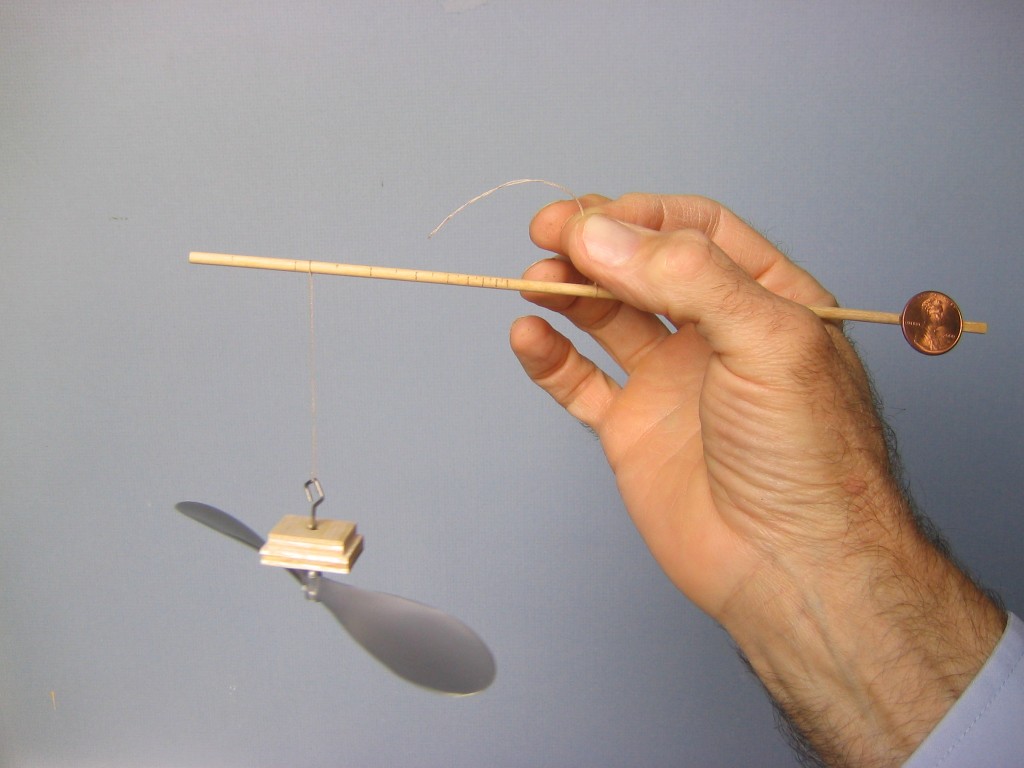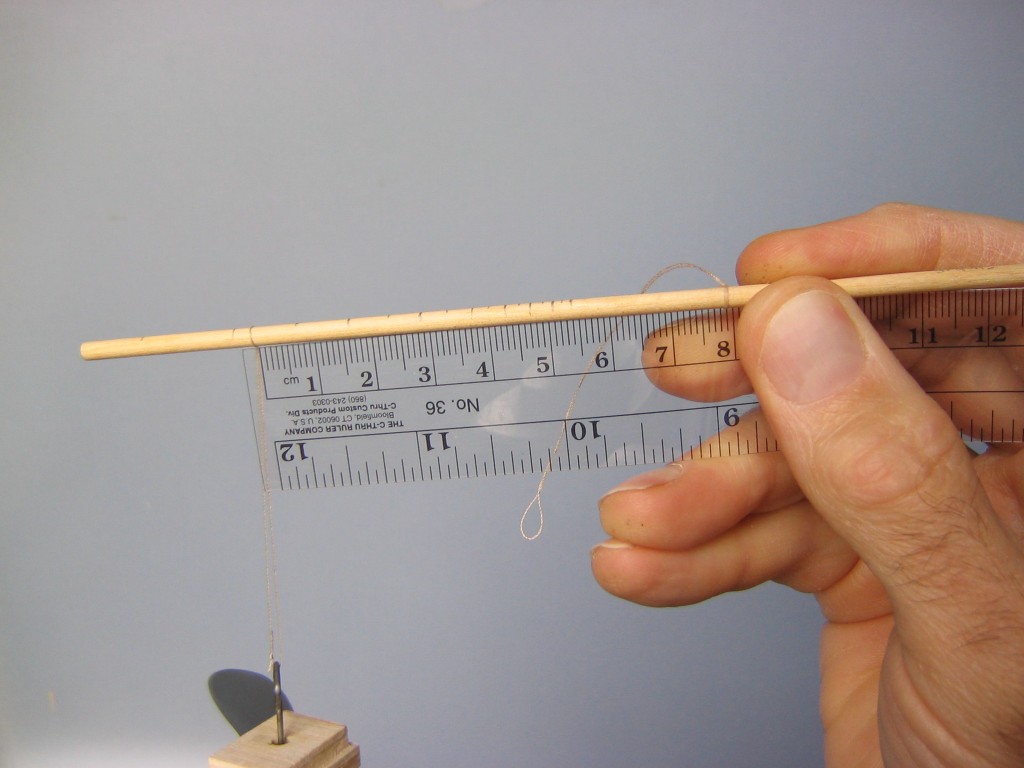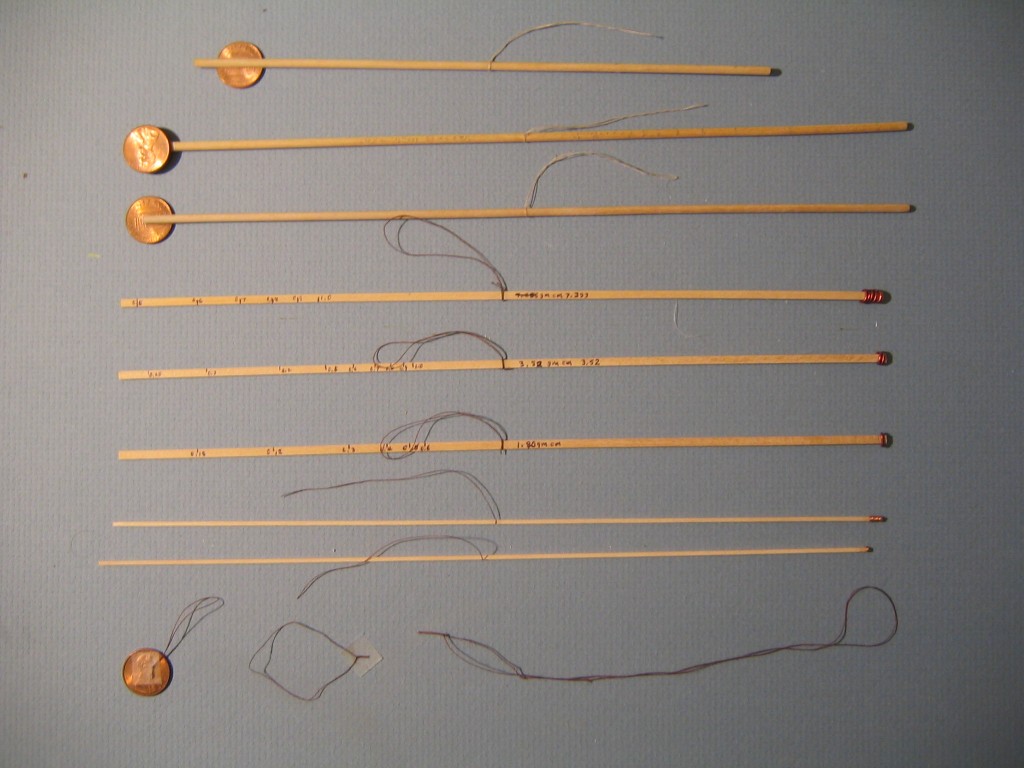My balsa sheet balanced at 2 1/4″ = 2.25″. Dividing that into 30.0 gives us a weight of 13.3 grams. This is a 1/16″ x 3″ x 36″ piece of wood. We can calculate the density of the wood, usually rated in pounds per cubic foot. 13.3 grams divided by 28.35 grams per ounce divided by 16 ounces per pound is 0.0294 pounds. 1/16″ x 3″ x 36″ is 6.75 cubic inches, divided by 12 x 12 x 12 = 1,728 cubic inches per cubic foot makes it 0.00391 cubic foot. Dividing the weight by the volume gives a density of 7.52 pounds per cubic foot, so this would be classed as 7# wood. You can use this as a guide when buying balsa sheet, the ratio of a 1/16″ x 3″ x 36″ sheet weight to the desired density is 13.3/7.52 = 1.77. If you want 5# wood, look for a sheet weighing 5 x 1.77 = 8.84 grams. This would balance 3.39″ = 3 3/8″ out on the described scale.
My yellow tissue paper balanced at 3 7/16″ = 3.4375″, dividing that into 30.00 makes the weight 8.72 grams. The two sheets of 20″ x 26″ have 2 x 20″ x 26″ = 1,040 square inches of area. The area density of this tissue is thus 8.72 grams per 1,040 square inches, or 0.839 grams per 100 square inches, 1.21 grams per square foot, 13.0 grams per square meter, 10.9 grams per square yard or 0.383 ounces per square yard. there are many tables of density for model airplane covering and unfortunately there are many different units used.
I made some penny balances using 1/8″ birch dowel. I have used them to weigh the parts of my second Big Pussycat and get results just as good as my decigram triple beam balance, maybe better. The first was 9″ long, four could be cut from a 36″ dowel. I shaved about 1/3 of the width off 1 1/8″ of one end, making a flat place. I tied a 2″ loop of thread around the center with a Larks Head knot, adjusted the position until the stick balanced horizontally, then glued it in place. I glued a new penny to the flat place so its center was 10 cm from the fulcrum thread loop. A post 1981 penny is 3/4″ in diameter, 3/8″ radius, and weighs 2.5 grams. I taped another penny to a loop of thread and hung it 10 cm on the other side of the center mark, verifying that it balanced. This has an unbalanced moment of 2.5 gm x 10 cm = 25 gm cm. I calculated the distances for weights from 2.5 to 10 gm in 0.5 gm steps and marked them on the stick. This one worked well for weighing the Big Pussycat; 3.60 gm for the airframe, 3.16 gm for the prop/noseblock assembly and 1.18 gm for the landing gear for a total weight of 7.94 grams . The parts were taped to a thread loop, the thread was slid along the stick until it balanced, and the distance to the fulcrum measured in centimeters, to the nearest mm. Weight is calculated as 25 gm cm moment divided by the distance in cm. The cm scale reading is good to two significant figures with the third reasonably guesstimated.


